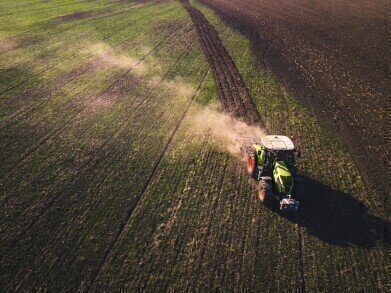Environmental Laboratory
How Does Agriculture Pollute the Air?
Dec 29 2022
Though the agricultural industry is crucial in producing enough food for the global population, it’s also one of the most damaging sectors on the planet. The contamination produced by farming has a variety of causes, types and effects, with air pollution one of the most prevalent and impactful.
There are a range of ways in which agriculture can contribute to air pollution, including the application of fertilisers and insecticides, the rearing of livestock, the use of heavy duty machinery and the burning of crop stubble. These practices result not just in poor quality air, but can also contribute to climate change and global warming as well.
Chemical products
Fertilisers play a crucial role in boosting crop yields, while pesticides ensure that any interference from insects, fungi and weeds is kept to a minimum. However, the chemicals contained within these products can be blown off course or evaporate into the air, thus contaminating the local atmosphere.
Some of the substances are contaminants in their own right, while others react with particles already present in the air to create particulate matter and ground-level ozone. Both of these can be harmful to human health when inhaled, as well as intensifying the warming effect of greenhouse gases.
Livestock cultivation
Keeping a substantial number of animals in one place concentrates the pollution they generate. When it comes to cows, sheep and other livestock, that’s a significant amount, with methane being the chief greenhouse gas they emit.
Meanwhile, the manure produced by those animals also generates ammonia and hydrogen sulphide. The former can react with other contaminants already present in the air to form dangerous aerosols, while the latter is a relatively under-reported greenhouse gas that contributes to global warming.
Tractors, combine harvesters and other machinery
The use of mechanical equipment has made the life of a farmer substantially easier, since manual tilling of the land is no longer necessary. However, the use of this machinery does necessitate the combustion of fossil fuels.
The diesel which powers the internal combustion engine of farm vehicles like tractors and combine harvesters generates a lot of carbon emissions. As well as being bad for the environment, they also contaminate the local atmosphere and jeopardise the health of animals and humans living nearby.
Stubble burning
The practice of stubble burning is commonplace throughout Asia and occurs at the end of the harvesting season. Once farmers have reaped all of their crops, they take to burning the stubble that is left behind so as to make way for the next season’s sowing – producing much air pollution in the process.
Stubble burning is prohibited in most countries around the globe, but that hasn’t diminished its popularity in many places. Indeed, strong winds can carry the smoke produced by the practice over very long distances, negatively impacting those far from the source of the pollution.
Digital Edition
AET 28.2 April/May 2024
May 2024
Business News - Teledyne Marine expands with the acquisition of Valeport - Signal partners with gas analysis experts in Korea Air Monitoring - Continuous Fine Particulate Emission Monitor...
View all digital editions
Events
Jul 30 2024 Jakarta, Indonesia
China Energy Summit & Exhibition
Jul 31 2024 Beijing, China
2024 Beijing International Coal & Mining Exhibition
Aug 07 2024 Beijing, China
IWA World Water Congress & Exhibition
Aug 11 2024 Toronto, Canada
Aug 25 2024 Stockholm, Sweden and online









.jpg)








